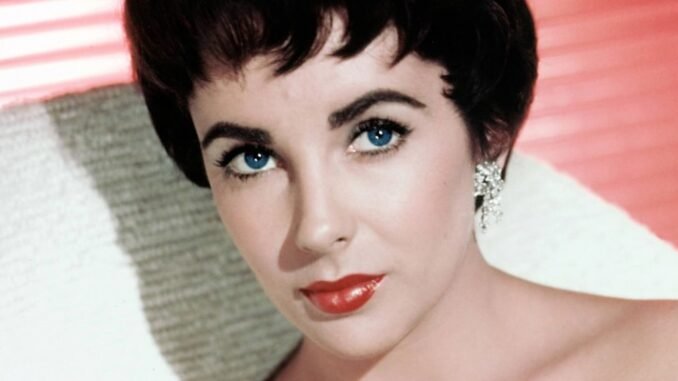
Elizabeth Taylor: a name synonymous with glamour, beauty, and Hollywood royalty. With her violet eyes and captivating presence, she epitomized the golden age of cinema, starring in iconic films like “Cleopatra,” “Cat on a Hot Tin Roof,” and “Who’s Afraid of Virginia Woolf?” Yet, behind the dazzling facade lay a life marked by tragedy, heartbreak, and resilience that would define Elizabeth Taylor’s legacy both on and off the screen.
Early Life and Stardom
Born on February 27, 1932, in London, England, Elizabeth Rosemond Taylor was destined for greatness from a young age. Her American parents relocated to Los Angeles when she was just seven years old, where she was discovered by talent scouts and signed her first film contract with Universal Pictures.
Elizabeth’s breakout role came in 1944 with “National Velvet,” where she played a spirited young girl who trains a horse for the Grand National. The film’s success catapulted her to stardom, and she quickly became one of Hollywood’s most sought-after actresses. Throughout the 1950s and 1960s, Elizabeth Taylor dominated the silver screen, earning critical acclaim and numerous awards for her performances.
Personal Turmoil and Heartbreak
Despite her professional success, Elizabeth’s personal life was tumultuous, marked by a series of failed marriages and public scandals. She was married a total of eight times to seven different men, including actor Richard Burton, whom she married and divorced twice. Their passionate and tempestuous relationship captivated the public imagination and became the subject of intense media scrutiny.
Elizabeth’s love life often overshadowed her career achievements, leading many to dismiss her as a frivolous celebrity. However, behind the headlines lay a woman who grappled with profound insecurities and vulnerabilities. Her struggles with her weight, substance abuse, and mental health were well-documented, shedding light on the darker side of fame and fortune.
Activism and Philanthropy
Despite her personal challenges, Elizabeth Taylor was deeply committed to humanitarian causes and used her fame to advocate for social justice and AIDS awareness. In the early 1980s, she became one of the first celebrities to publicly support the fight against HIV/AIDS, co-founding the American Foundation for AIDS Research (amfAR) and the Elizabeth Taylor AIDS Foundation.
Her tireless efforts to raise awareness and funds for AIDS research earned her widespread acclaim and cemented her legacy as a compassionate and fearless advocate. Elizabeth’s activism was deeply personal, having lost many friends to the disease, including actor Rock Hudson, with whom she starred in several films.
Health Battles and Legacy
In her later years, Elizabeth Taylor’s health began to decline, and she struggled with various ailments, including congestive heart failure and osteoporosis. Despite her declining health, she remained active in philanthropy and continued to use her voice to speak out on behalf of the marginalized and disenfranchised.
Elizabeth Taylor passed away on March 23, 2011, at the age of 79, leaving behind a legacy that transcends the silver screen. Her contributions to film, activism, and philanthropy have left an indelible mark on the world, inspiring future generations to use their platforms for positive change.
Conclusion
The heartbreaking reality of Elizabeth Taylor’s life is a testament to the complexities of fame, fortune, and the human experience. Behind the glamorous exterior lay a woman who grappled with profound pain and adversity, yet never lost sight of her capacity to make a difference in the world.
Elizabeth Taylor’s legacy is one of resilience, compassion, and unyielding strength in the face of adversity. Her life serves as a reminder that true greatness is not measured by accolades or achievements but by the depth of one’s compassion and the impact they leave on the world.
In the annals of Hollywood history, Elizabeth Taylor remains a towering figure, revered for her talent, admired for her beauty, and cherished for her humanity. Her violet eyes may have captivated audiences on the silver screen, but it was her unwavering spirit and indomitable courage that truly made her an icon for the ages.
Leave a Reply